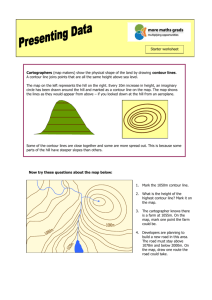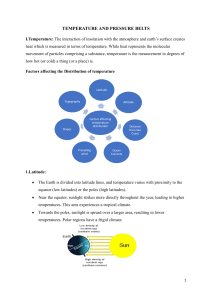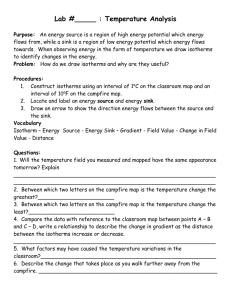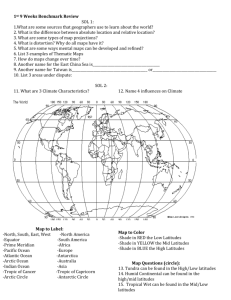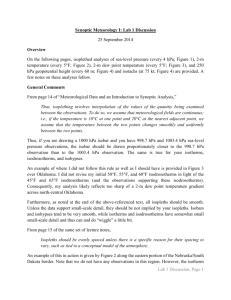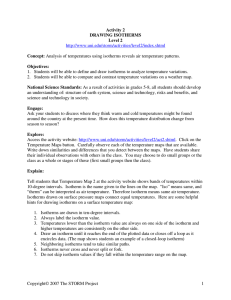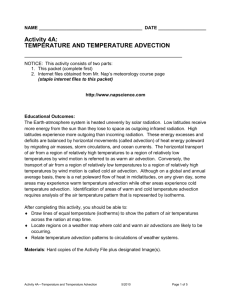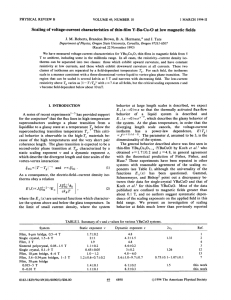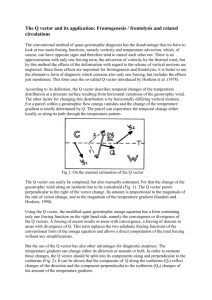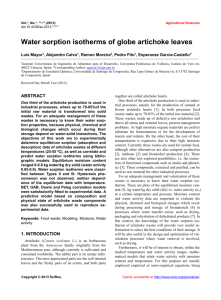Figure 9.4 (a) : The distribution of surface air temperature in
advertisement
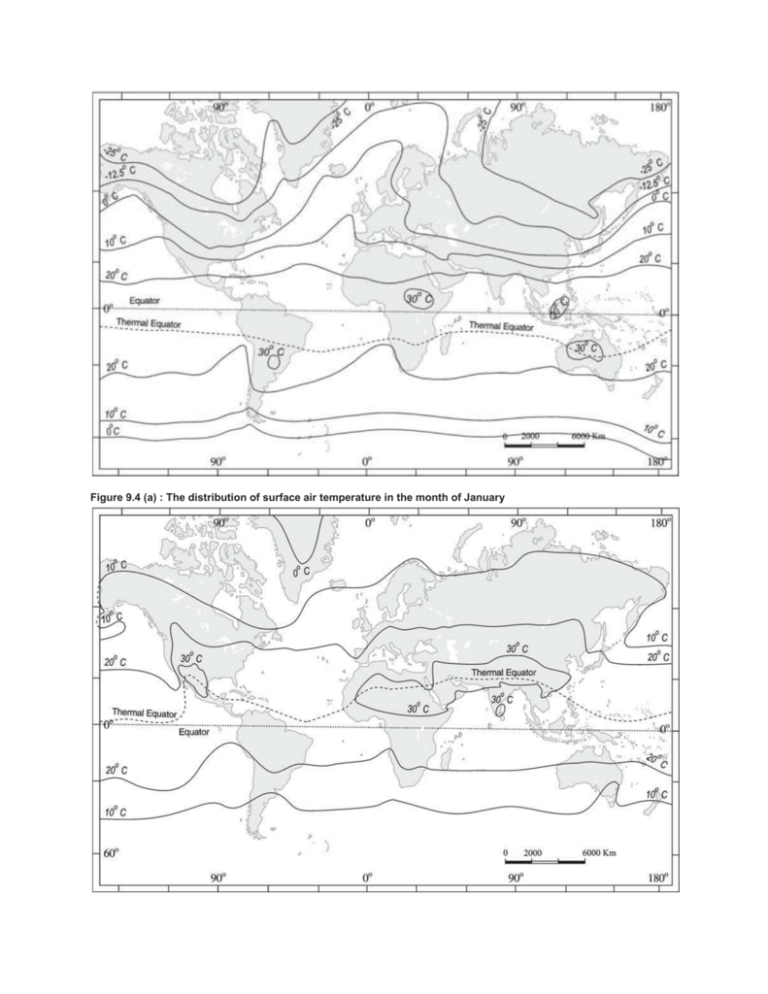
Figure 9.4 (a) : The distribution of surface air temperature in the month of January The distribution of surface air temperature in the month of July Figure 9.5 : The range of temperature between January and July Distribution of Temperature The global distribution of temperature can well be understood by studying the temperature distribution in January and July. The temperature distribution is generally shown on the map with the help of isotherms. The Isotherms are lines joining places having equal temperature. Figure 9.4 (a) and (b) show the distribution of surface air temperature in the month of January and July. In general the effect of the latitude on temperature is well pronounced on the map, as the isotherms are generally parallel to the latitude. The deviation from this general trend is more pronounced in January than in July, especially in the northern hemisphere. In the northern hemisphere the land surface area is much larger than in the southern hemisphere. Hence, the effects of land mass and the ocean currents are well pronounced. In January the isotherms deviate to the north over the ocean and to the south over the continent. This can be seen on the North Atlantic Ocean. The presence of warm ocean currents, Gulf Stream and North Atlantic drift, make the Northern Atlantic Ocean warmer and the isotherms bend towards the north. Over the land the temperature decreases sharply and the isotherms bend towards south in Europe. It is much pronounced in the Siberian plain. The mean January temperature along 60° E longitude is minus 20° C both at 80° N and 50° N latitudes. The mean monthly temperature for January is over 27° C, in equatorial oceans over 24° C in the tropics and 2° C - 0° C in the middle latitudes and –18° C to –48° C in the Eurasian continental interior. The effect of the ocean is well pronounced in the southern hemisphere. Here the isotherms are more or less parallel to the latitudes and the variation in temperature is more gradual than in the northern hemisphere. The isotherm of 20° C, 10° C, and 0° C runs parallel to 35° S, 45° S and 60° S latitudes respectively. In July the isotherms generally run parallel to the latitude. The equatorial oceans record warmer temperature, more than 27°C. Over the land more than 30°C is noticed in the subtropical continental region of Asia, along the 30° N latitude. Along the 40° N runs the isotherm of 10° C and along the 40° S the temperature is 10° C. Figure 9.5 shows the range of temperature between January and July. The highest range of temperature is more than 60° C over the north-eastern part of Eurasian continent. This is due to continentality. The least range of temperature, 3°C, is found between 20° S and 15° N


